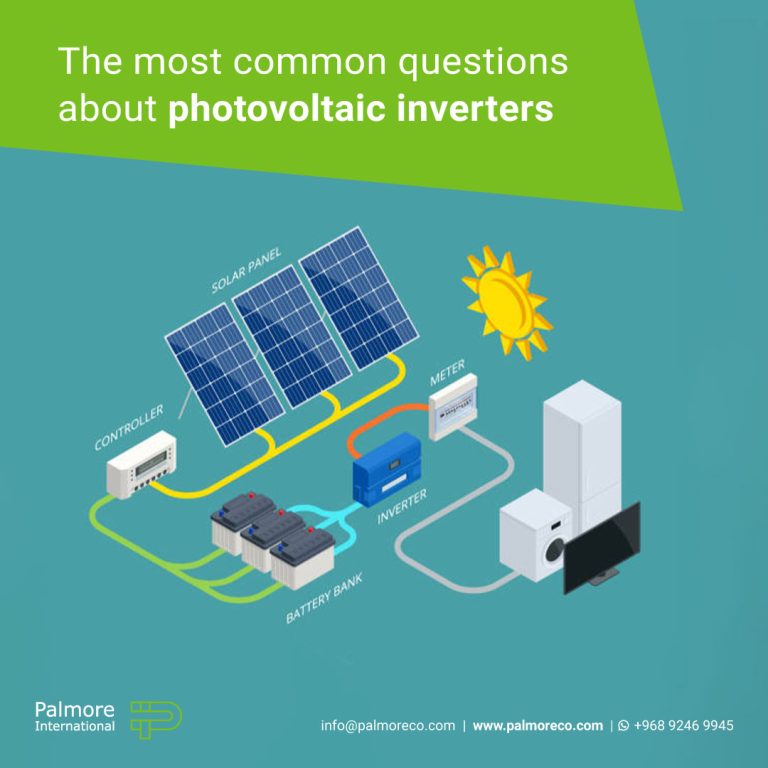To choose an inverter, two very important parameters should be considered:
Input voltage to the inverter
Output power from the inverter
The input voltage to the inverter disconnected from the network corresponds to the battery voltage and in the type connected to the network corresponds to the panel voltage. The output power from the inverter is related to the maximum power that the system is designed for. This power for separate systems usually ranges from 200 watts to 3000 watts in photovoltaic inverters.
Photovoltaic inverter is a device that converts direct current produced by solar panels into alternating current for consumers or injection into the power grid.
The inverters used in grid-connected photovoltaic systems are completely different from the inverters used in off-grid systems and their internal structure is different, although some manufacturing companies produce inverters. which can be used simultaneously to inject into the network and also to supply electricity for personal use.
In general, solar inverters are classified into the following forms, which were comprehensively reviewed in the above article:
Classification of inverters in terms of output waveform
Classification of inverters in terms of connection to the grid
Classification of inverters in terms of panel connections
The input voltage of the inverter must always be equal to the system voltage, which is the voltage of batteries and panels. The most influential factor in choosing the system voltage is the distance between batteries and panels. Because at higher voltage, the amount of current is less and as a result, the diameter of the cable, which is relatively expensive, is reduced.
Considering that the inverter converts DC electricity to AC, yes, any inverter can be used for solar systems, but it should be taken into account that since this inverter must be constantly working, it is necessary to choose an inverter that has high quality and efficiency. It is good to use. Therefore, it is not recommended to use cheap inverters in the market, which are mainly used for traveling and camping, and are made of low-quality products with low efficiency.
Most inverters have a power factor range and are user adjustable. Obviously, in our country, considering that the amount paid by the government for the purchase of photovoltaic solar power is only for active power, from the point of view of the power plant owner, injection with a power factor of 1 is the best option, but from the point of view of the grid, especially for power plants with high capacity, a power factor of 1 can be become a problem for the network.
Inverters will create harmonics, but quality inverters have acceptable harmonic filters that minimize these harmonics. Of course, in our country, electricity injected into the grid by photovoltaic power plants with a total harmonic disturbance (THD) of less than 5% is accepted. It should be noted that this amount should be checked up to the 23rd harmonic. At the point of injection into the network, if the total harmonic is more than 5%, a harmonic filter should be used.
MPPT system or maximum power point detector in inverters is a DC to DC converter circuit that has an important task. Due to the fact that the output voltage of solar panels changes by changing the amount of radiation, current and by changing the temperature of the cell, Therefore, when we connect a number of panels together in series, due to temperature changes, we will have noticeable voltage changes in different seasons of the year.
Yes, this converter is responsible for converting the output voltage and current of the solar arrays, in such a way that it adjusts the voltage and current at the optimal point of photovoltaic inverters operation.


